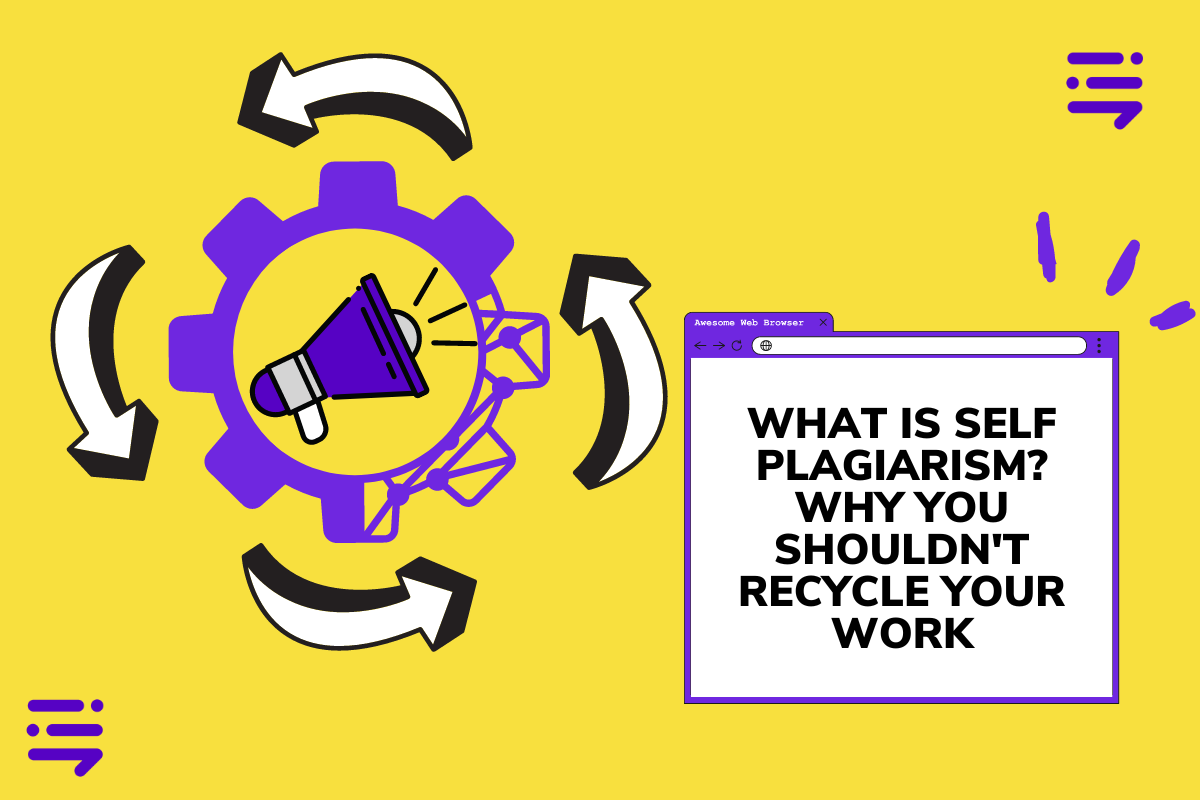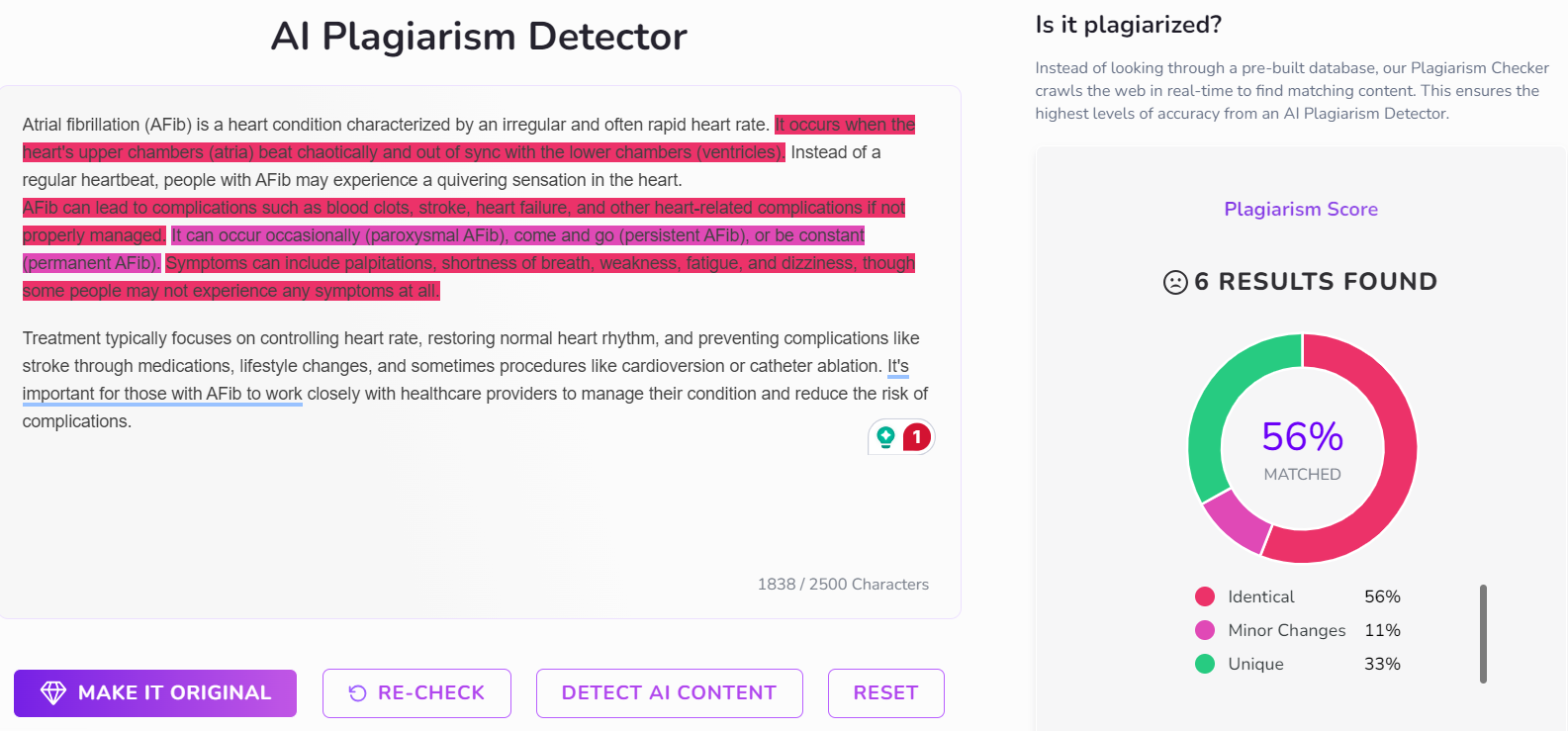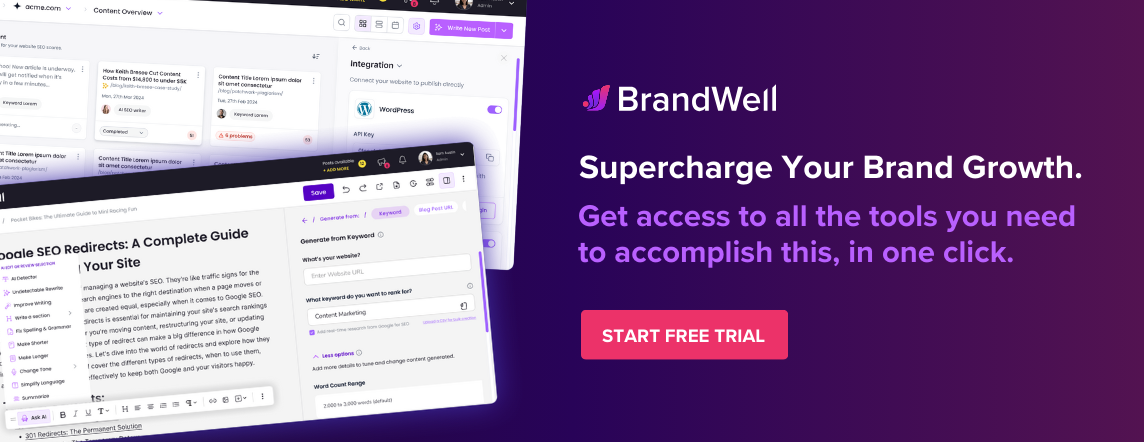Discover top guides, trends, tips and expertise from AIO Writers
What is Self-Plagiarism? Why You Shouldn’t Recycle Your Work
Julia McCoy
Wednesday, 19th Jun 2024
Imagine putting your heart and soul into crafting a brilliant piece of writing, only to find out it can’t be published because you’ve already used some of the same words elsewhere. This is called self-plagiarism – presenting a piece of your work as original when it’s not.
While it may sound harmless at first glance, this often-overlooked ethical issue can have serious consequences in academic and professional circles alike.
Join me as we dive into what is self-plagiarism, why it matters, and how you can navigate these tricky waters to ensure your work remains both original and ethically sound.
Table Of Contents:
- Why is Self-Plagiarism a Big Deal?
- What Are The Consequences of Self-Plagiarism?
- How to Avoid Self-Plagiarism
- FAQs: What is Self Plagiarism?
- Conclusion
Why is Self-Plagiarism a Big Deal?
You might be thinking, “It’s my work – why shouldn’t I be able to use it again?”
Fair enough, but here’s the catch: when you submit academic work, or even when you publish in journals, there’s an implicit expectation of originality.
You’re essentially promising that this is new work, created specifically for this particular instance.
When you re-use material, you’re breaking that promise.
Academic Integrity: The Heart of the Matter
Think back to the concept of academic integrity. What does it stand for?
Honesty, originality, and ethical research practices.
Universities take these values seriously, as do academic journals and publishers.
This helps maintain the value and trustworthiness of academic work.
Self-plagiarism muddies the waters of academic honesty.
Imagine a student submitting the same paper for two different courses. From the professors’ point of view, both assignments should represent distinct efforts.
What’s more, reusing work might give a student an unfair advantage over classmates who are putting in the effort to develop original ideas for every assignment.
Eroding Trust in Research
In the broader field of research, every new study or paper aims to contribute something original to the conversation.
By presenting recycled work without proper attribution, you’re essentially inflating your output and giving a false impression of productivity.
This practice, sometimes called “salami slicing,” not only undermines the value of your own original contributions but also weakens the foundation of the entire research ecosystem.
Copyright Infringement Complications
Beyond academic integrity, copyright plays a crucial role, adding another layer of complexity to the issue of self-plagiarism.
Did you know that when you publish an article in most academic journals, you often transfer the copyright to them?
While you retain intellectual ownership of the ideas, the publisher has the legal say on how that specific piece of work – those exact words – are used.
So, even if you wanted to re-use parts of your own published article in a new one, you’d likely need permission from the original publisher. This is where understanding your author rights comes into play.
What Are The Consequences of Self-Plagiarism?
The consequences of self-plagiarism can vary depending on the context, but they generally include reputational damage, academic sanctions, and legal repercussions in some cases.
For example, in academic settings, reusing one’s own work without proper citation can lead to penalties ranging from a failing grade on an assignment to suspension or expulsion from a program.
In professional contexts, such as journalism or publishing, self-plagiarism can damage a writer’s credibility and lead to rejection of their work or even termination of employment.
One notable example is the case of Jonah Lehrer, a well-known science writer and author, who was accused of recycling his previously published column for The Wall Street Journal for a more recent column in The New Yorker. The fallout from this controversy was significant. Lehrer resigned from his position at The New Yorker, where he had been a staff writer, and several of his books were pulled from publication. The incident damaged his reputation within the literary and journalistic communities and raised serious ethical concerns about the integrity of his work.
The Jonah Lehrer case serves as a cautionary tale about the ethical boundaries of self-plagiarism and the importance of transparency and honesty in writing and publishing. It underscores the potential consequences of plagiarism, both professional and personal, that can arise when ethical standards are compromised in the pursuit of producing content.
How to Avoid Self-Plagiarism
Now that we understand why self-plagiarism is problematic, let’s look at practical ways to avoid it.
Here are some clear-cut scenarios to consider:
Scenario 1: Reusing Parts of Your Previous Papers
You’ve got a well-written section from an old essay that perfectly fits into your new research paper. It’s tempting to simply copy and paste. However, doing so without proper acknowledgment would be considered self-plagiarism.
So, how do you avoid this?
Directly quoting yourself from the previous paper and including a proper citation is an acceptable practice.
Imagine you have an insightful paragraph analyzing Shakespeare’s use of imagery. You could include it in your new paper with a note indicating it’s drawn from your previous work.
Scenario 2: Repurposing Data from Your Research
Let’s say you’re a budding scientist who has collected data for a research project. You’ve already used this data in a paper published in a scientific journal. Now, you’re working on a new research project. Can you use the same dataset without raising any red flags?
Transparency is key. If you’re using a previously published dataset, clearly acknowledge the source in your new work, referencing your prior publication.
This not only adheres to ethical guidelines but also allows other researchers to follow your methodology and potentially build upon your findings.
Scenario 3: Submitting a Previously Submitted Work
Let’s face it – deadlines can be tough, and it’s tempting to re-submit a stellar paper you wrote for one class to another. This, however, falls under the category of self-plagiarism.
Each assignment should stem from original effort. Speak with your professors and see if you can adapt a previous topic. This demonstrates a genuine desire to engage with the coursework while adhering to academic integrity.
Whether self-plagiarism is deliberate or accidental, it’s best to check the originality of your work before submitting it. This is where a plagiarism detector like BrandWell can help.
Simply paste your text or upload a file to check if your content contains text that you have previously published. Within minutes you’ll receive a detailed report like this:

Be on the safe side and always use a plagiarism checker whenever you are creating new content.
FAQs: What is Self Plagiarism?
What Counts as Self-Plagiarism?
Self-plagiarism is submitting the same work for different assignments or reusing your work without citing yourself. This can involve reusing significant portions of text or even an entire paper.
Why is Self-Plagiarism Illegal?
Self-plagiarism may infringe on copyright if it involves previously published work where rights have been transferred.
In an academic context, it violates ethical codes of originality. Think of it as misrepresenting your work.
Will I Get Caught for Self-Plagiarism?
It’s possible. Universities and publishers use plagiarism detection software like Turnitin which compares your submission against a massive database, including your prior work.
Is Self-Plagiarism a Thing in College?
Yes, colleges are very strict. They view all academic dishonesty as a serious offense with consequences. Think failed assignments, suspension, and even expulsion.
Conclusion
Ultimately, self-plagiarism is about maintaining the core values of academic and professional honesty. By understanding what is self plagiarism, recognizing its ethical and legal implications, and learning practical ways to avoid it, you can confidently navigate the world of research and publishing while maintaining the integrity of your work and upholding ethical standards.
The bottom line? It all boils down to ethical conduct and transparency in all aspects of your academic and professional life. Be diligent and cite your sources correctly – including yourself. This approach helps you produce original, ethical work that contributes to your field.

UNLOCK YOUR POTENTIAL
Long Headline that highlights Value Proposition of Lead Magnet
Grab a front row seat to our video masterclasses, interviews, case studies, tutorials, and guides.



